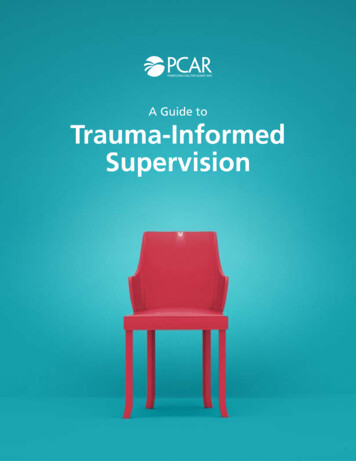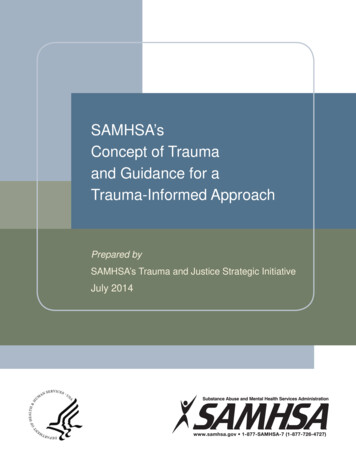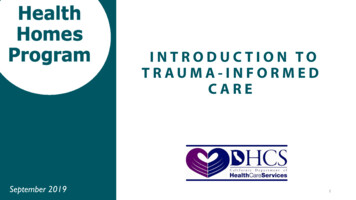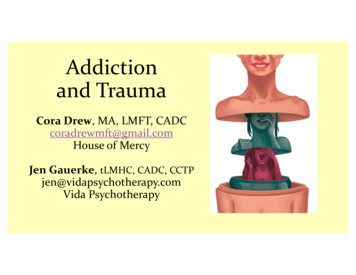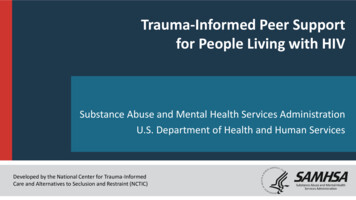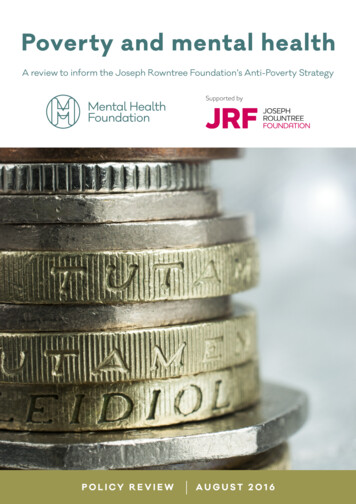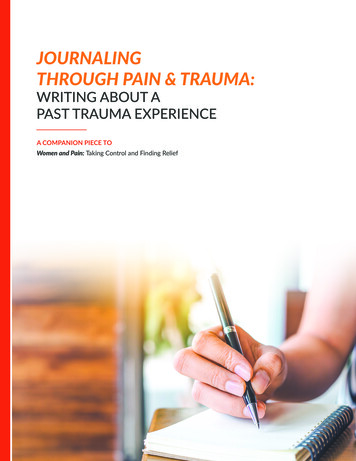
Transcription
JOURNALINGTHROUGH PAIN & TRAUMA:WRITING ABOUT APAST TRAUMA EXPERIENCEA COMPANION PIECE TOWomen and Pain: Taking Control and Finding Relief
Journaling is a self-care technique that can help you heal, grow and thrive. Journaling helps bring order to your deepest thoughts and fears. It createsorder out of chaos. Journaling acts as free therapy. It helps you have a conversation with theperson who knows you best: you. You can go back and track your progress. Read what you’ve written and seehow much progress you’ve made on your journey. Some find joy in knowing their words help others, so they share theirhealing. But whether or not you share your work is up to you.Writing prompts developed by therapeutic writing expertSarah Saffian, LMSW, MFADownload companion piece atdrwaynejonas.com/women
FIVE IMPORTANT THINGS ABOUT YOUMake a list of five things that defined you in some way during the time of the trauma — just one word, one phrase, or asentence at most. Could be a role or label (mother, doctor, daughter); a quality of your personality, outlook, physicality; aparticular skill (or a lack of skill); a strong like or dislike; an experience you had that was especially meaningful, perhaps onethat somehow divided your life into a Before and an After (for instance, the traumatic event); a place, an object, or evenanother person especially meaningful to your sense of self. See what rises to the surface organically, without spending toomuch time over-thinking; you could do this exercise again in a month and come up with five completely different things. Onceyou have your list, think about each item and expand on it, writing what you mean that it defines your sense of self, comingup with examples of you showcasing that aspect. Make the details clear. Does the trauma define you? Explore how to defusethe power of the trauma, downgrading it from a key aspect of your identity to something that happened to you. What elseare you, besides the trauma, to get back to your true, whole self? Imagine what you would be like if the trauma was part ofbut did not define or control you.Journaling through Pain & Trauma: Writing About a Past Trauma Experience3
CREATIVE LICENSEWrite about something that actually happened, but that you don’t have a full, first-hand account of, or have limitedinformation about — either because you weren’t there for it, or you were there, but can’t remember/ your memory is spotty.This isn’t fabrication or fiction, because you’re drawing from factual information that you do have, extrapolating from that toimagine the rest. Often when we have limited information, it’s hard to reach a place of understanding, healing, and peace; sothis exercise in filling in those gaps can help with that, and can help you move on.Journaling through Pain & Trauma: Writing About a Past Trauma Experience4
LETTER TO YOURSELFWrite a letter to your former self, either immediately before, during, or in the aftermath of the traumatic event. The lettercould take the form of warning, reassurance, a yearning for when things were better. Note your voice, too, the tone in whichyou address yourself. Why does this particular self need to hear from you now? And why do you, now, need to reach out toher? Keep in mind that your thoughts and feelings now are likely different from your thoughts and feelings then, which is thepoint of the exercise — to gain perspective on your experience and your own evolution.Journaling through Pain & Trauma: Writing About a Past Trauma Experience5
PAST/PRESENTWrite two versions of the traumatic event, one in the past tense (remembering it from your current perspective), the otherin the present tense (entering back into the immediate moment). Ideally take time in between the versions, and don’t look atthe past tense version when you begin writing the present tense one; the point here is not to have two identical versions withthe verb tenses changed, but rather, to examine and learn from the differences in how you remember, and how to transformthat memory: Do you reflect more in the past tense? Do you have greater access to physical and emotional details in thepresent tense? Do you cover more ground in the past tense version, and go deeper and narrower in the present tense? Is yournarrative voice different in the two versions (this may come up especially if the moment is in childhood)?Journaling through Pain & Trauma: Writing About a Past Trauma Experience6
WRITE FROM A PHOTOGRAPHChoose a photograph that is especially meaningful to you, ideally with you in it, either alone or with other people. Then usethe photograph to prompt your writing — you can start with concrete context (date, location, etc.), but ultimately the pointis to delve into the internal life of the photograph: the thoughts and feelings of the person/people pictured (whether you orsomeone else), especially if in contrast to external appearances; something that just happened or is about to happen, etc.What is unseen? The photograph is a frozen moment in time, but on a continuum that’s always evolving; what was leading upto this moment? And what progresses from it?Journaling through Pain & Trauma: Writing About a Past Trauma Experience7
Journaling through Pain & Trauma: Writing About a Past Trauma Experience 6 PAST/PRESENT Write two versions of the traumatic event, one in the past tense (remembering it from your current perspective), the other in the present tense (entering back into the immediate moment). Ideally take time in between the versions, and don't look at




